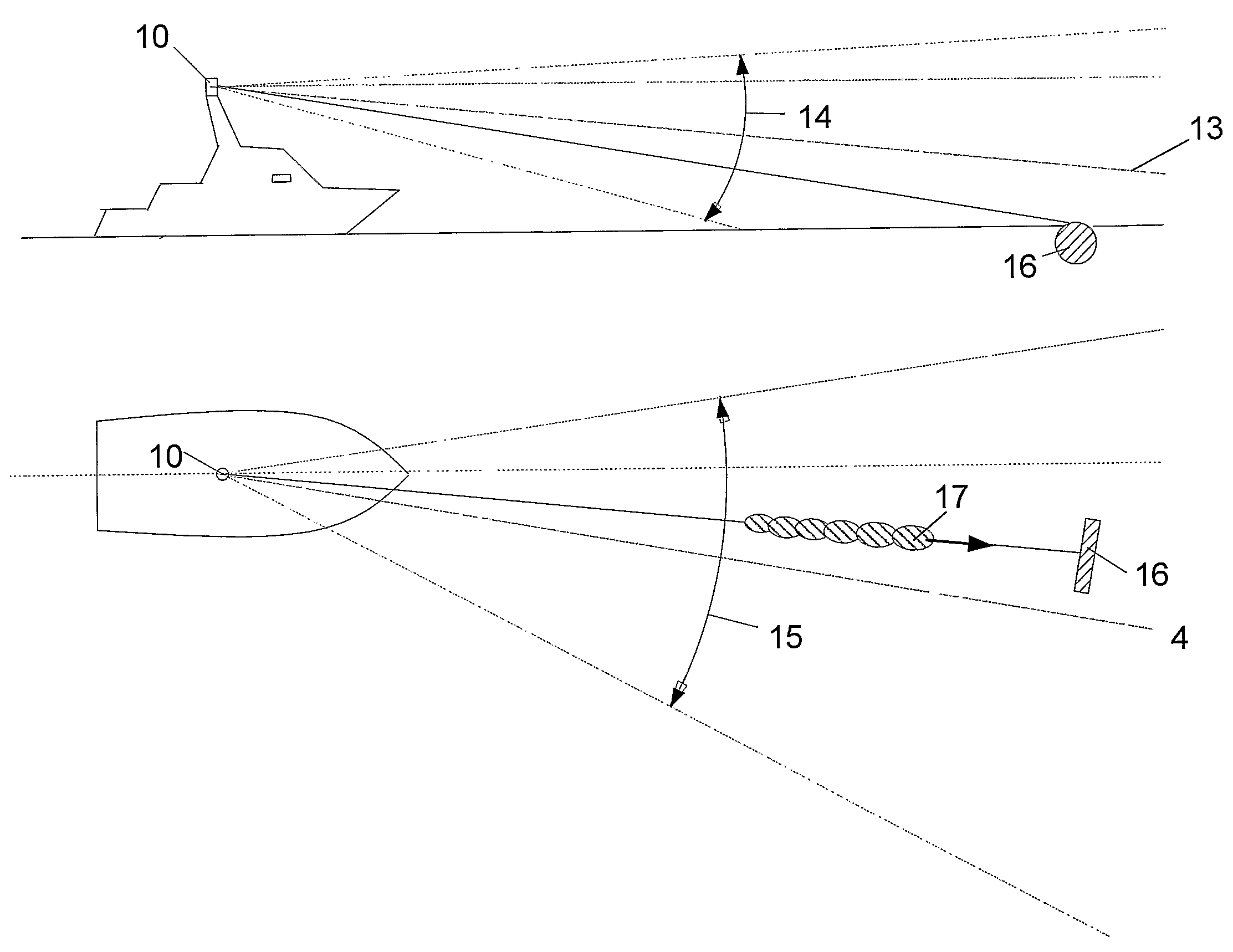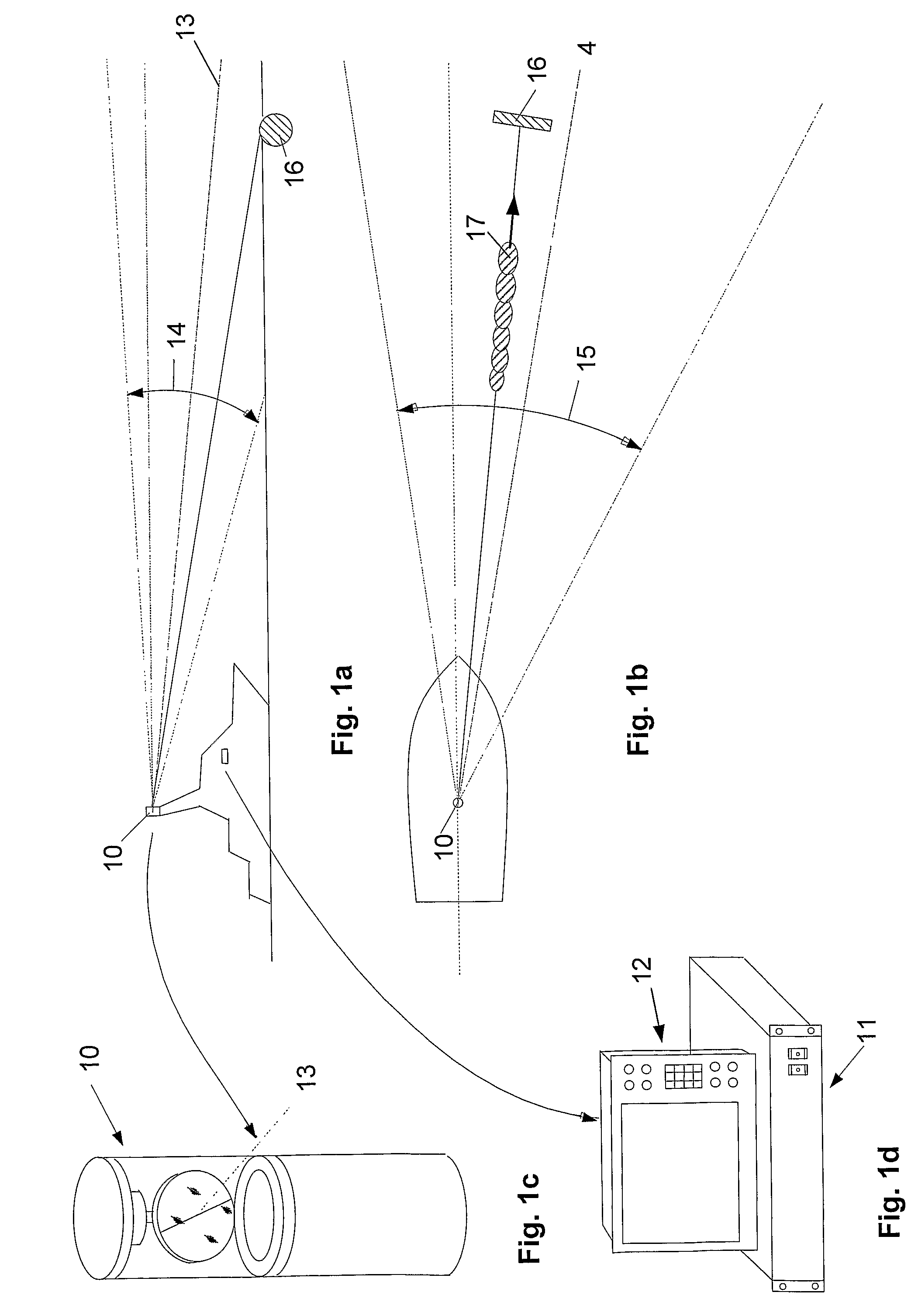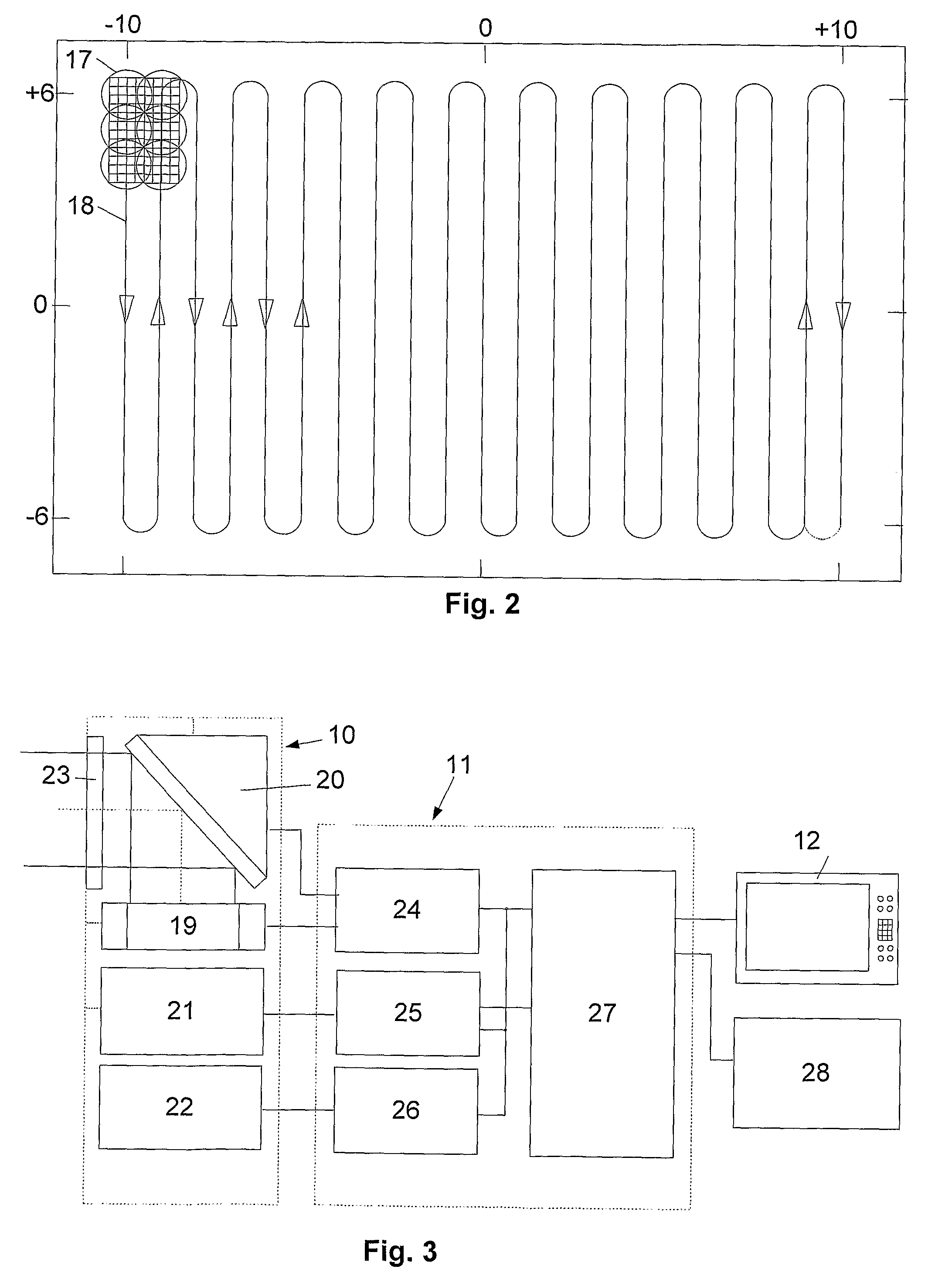System for the detection and the depiction of objects in the path of marine vessels
a technology for depicting and detecting objects, applied in navigation instruments, steering initiations, instruments, etc., can solve the problems of high risk of accidents, increased consequences of collision with floating objects, and increased number of containers flushed overboard, so as to improve the depiction and accurate distance measurements
- Summary
- Abstract
- Description
- Claims
- Application Information
AI Technical Summary
Benefits of technology
Problems solved by technology
Method used
Image
Examples
Embodiment Construction
[0030]Firstly referring to FIGS. 1a and 1B, which illustrate a vessel provided with a system in accordance with the invention, hereinafter referred to as a marine laser-radar-system, abbreviated MLR system. The MLR system comprises a sweeping unit 10 (sweeping head) (shown enlarged in FIG. 1c), a control unit 11 and an operator panel (screen) 12 (shown in FIG. 1d). The sweeping unit 10 is arranged on a mast or to another platform above the wheel house roof to a vessel having best possible sight to the observation area. The control unit 11 is mounted within the wheel house to the vessel and integrated with existing power supply, navigation equipment, monitors and internal communication to show both video and radar pictures, and to notify about detected obstructions in a planned vessel course.
[0031]The MLR system can search a sector around a centre axis 13 by sweeping an infrared laser beam vertically within a vertical sector 14 and horizontally within a horizontal sector 15 or by a c...
PUM
 Login to View More
Login to View More Abstract
Description
Claims
Application Information
 Login to View More
Login to View More - R&D
- Intellectual Property
- Life Sciences
- Materials
- Tech Scout
- Unparalleled Data Quality
- Higher Quality Content
- 60% Fewer Hallucinations
Browse by: Latest US Patents, China's latest patents, Technical Efficacy Thesaurus, Application Domain, Technology Topic, Popular Technical Reports.
© 2025 PatSnap. All rights reserved.Legal|Privacy policy|Modern Slavery Act Transparency Statement|Sitemap|About US| Contact US: help@patsnap.com



